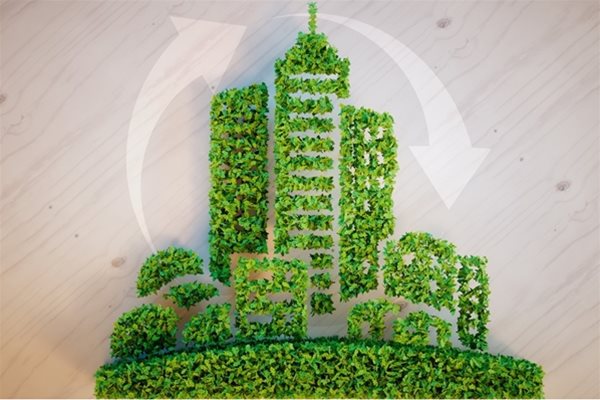Sustainability within the concrete industry

With legislations such as the Paris agreement encouraging companies to reduce their carbon footprint by 2050, it would be a hard-push to find any industry that is not making a conscious effort to become more sustainable. The concrete industry is no different. While the process of making concrete is notorious for not being the most environmentally friendly method, the ways in which concrete is used, and the tools used to distribute and mix the material are evolving to promote more sustainable practices.
Producing concrete
Concrete is made by adding sand and aggregates to cement powder, once the water is added to the mixture, it enters into its hardened state. Production of the cement powder is the most carbon-intensive part: it involves using fossil fuels to heat a mixture of limestone and clay to more than 1,400°C in a kiln. Carbon is emitted during the chemical reaction that takes place. Cement production is widely thought to be the third largest producer of CO2, behind the transport and energy sector. On average, it is estimated that roughly 2.6 tons of raw materials are used in order to make one ton of cement.
How concrete is used
It can be difficult to specify the exact amount of concrete that is needed to fulfil the needs of a project, so concrete is frequently over-ordered; there is almost always excess concrete left in the barrel of mixers. As is the nature of the material, any excess concrete that is not being constantly mixed will quickly proceed to dry up and solidify, meaning that it has to either be recycled or dumped.
U-Block Moulds
We are proud to offer a sustainable solution to leftover ready mix concrete. Instead of throwing away the excess concrete, there is the opportunity to turn it into a concrete ‘lego’ block. Our large range of U-Block Moulds provides a simple and easy way to turn excess waste concrete into concrete blocks. The surplus concrete is simply poured into the block mould and turned into a concrete block.
Our range of U-Block Moulds are compatible with all the market leading brands. They’re available in many different forms and sizes, catering to a large number of applications. For example, they can be used to create perimeter walls and fencing, road safety barriers, fire protection walls, or even temporary buildings. The blocks easily interlock via studs on the top, which allows for multiple blocks to be stacked without the use of mortar to connect them. All you need is flat and stable surface. Installation can start as soon as the blocks are delivered on site.
While you're here, why not view our complete range of u-block moulds and accessories, and get in touch with our team of concrete equipment specialists, who are always willing to help point you in the direction of the right equipment for your project, by filling in our online enquiry form, or by emailing [email protected], or dropping us a call at 01280 820770.